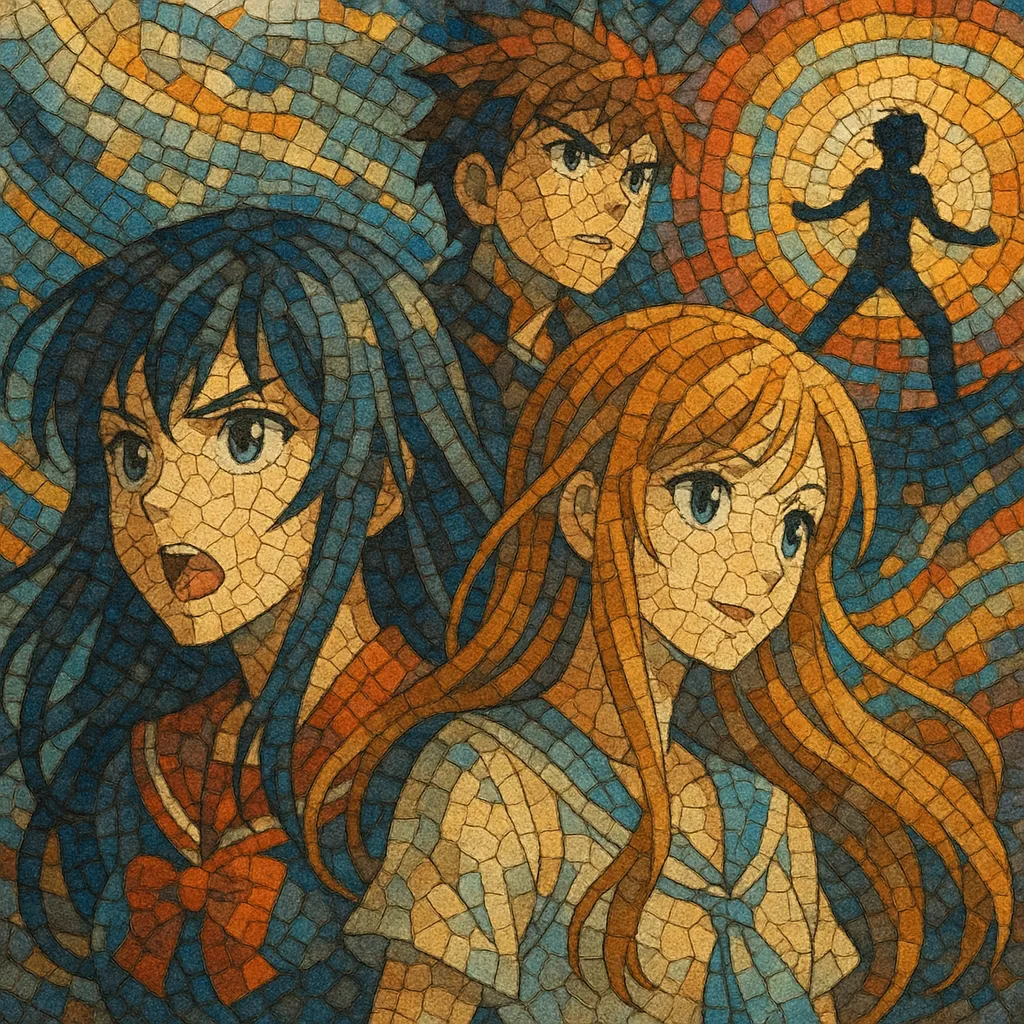Anime (often called "anisong" for vocal themes) is the umbrella term for songs and scores created for Japanese animation, including opening/ending themes and background music. It blends contemporary J‑pop/J‑rock songwriting with dramatic orchestral scoring and modern electronic production, aiming for instantly memorable hooks and emotionally charged climaxes tailored to a show's narrative and characters.
Stylistic hallmarks include high-register, expressive vocals; tight, hook-forward structures (especially 90-second “TV size” versions); bright, polished production; and frequent late-song key changes. Arrangements often hybridize rock bands, strings, brass, and EDM textures to deliver cinematic impact, while lyrics favor aspirational, metaphor-rich imagery that mirrors the series’ themes.
Television anime established a distinct theme-song tradition in the early 1960s, with shows like Astro Boy popularizing catchy, chorus-driven openings. These early themes drew heavily from kayōkyoku and children’s songs, setting the template for concise, memorable melodies tied to specific characters and series.
As mecha and hero anime flourished, powerful “hero songs” voiced by specialists became common. The 1980s saw city pop and synth-pop influence grow, while franchises like Macross integrated idol-singer narratives, making diegetic pop a core part of storytelling. This era cemented the blend of pop hooks and dramatic presentation that defines anisong.
The 1990s mainstreamed the J‑pop/J‑rock tie-in, with major artists providing themes and composers elevating scores to cinematic levels (e.g., jazz-forward, big-band fusion and orchestral hybrids). Labels and festivals dedicated to anisong emerged, professionalizing the scene. The 2000s expanded stylistic range—pop-punk, emo-rock, electronic danceforms—while “TV size” edits became a strategic format for discovery.
Streaming and social media propelled anime music worldwide. High-impact rock/electronic themes and lush hybrid scores reached international charts, while ballads and mid-tempo pop remained staples for endings. Cross-media franchises, VTuber ecosystems, and online fandom accelerated global adoption of anime’s songwriting and production aesthetics.
Write two versions: a full single (3–4 minutes) and a 90-second “TV size” cut. A common structure is intro → A-melody (verse) → B-melody (pre-chorus) → chorus, with a bridge and a final double chorus in the full version. Aim to present the core hook by the first minute, and consider a late-song key change for lift.
Use bright, diatonic pop progressions (I–V–vi–IV, vi–IV–I–V) with occasional modal interchange or secondary dominants for drama. Melodies should be singable yet rangy, often saving the highest note for the chorus. Anisong frequently features a semitone or whole-step modulation in the final chorus to heighten emotion.
Tempos vary widely: 70–110 BPM for emotive endings; 120–170 BPM for energetic openings. Rock-driven OPs favor tight, driving drums with eighth-note guitars; EDM-leaning tracks may employ sidechained pads, arpeggios, and four-on-the-floor choruses.
Blend rock band basics (distorted guitars, electric bass, punchy drums) with cinematic elements (strings, brass stabs, big percussion) and modern synths. Use layered pads and octave-doubled leads to widen choruses. For background scores, develop leitmotifs for characters and themes, arranging them across orchestral, rock, and electronic palettes to fit scene mood.
Write aspirational, metaphor-rich lines that echo the show’s motifs (friendship, courage, destiny, longing) without spoiling plot details. Hooks should be concise and emotionally direct. Light code-switching or English catchphrases can add memorability for global audiences.
Prioritize clear, upfront vocals with doubles and harmonies in the chorus. Tighten low end with controlled kick/bass interplay; keep guitars and synths layered but well-EQ’d to avoid masking. Use automation for dynamic builds, and consider a short, high-impact intro to suit title sequence timing.


